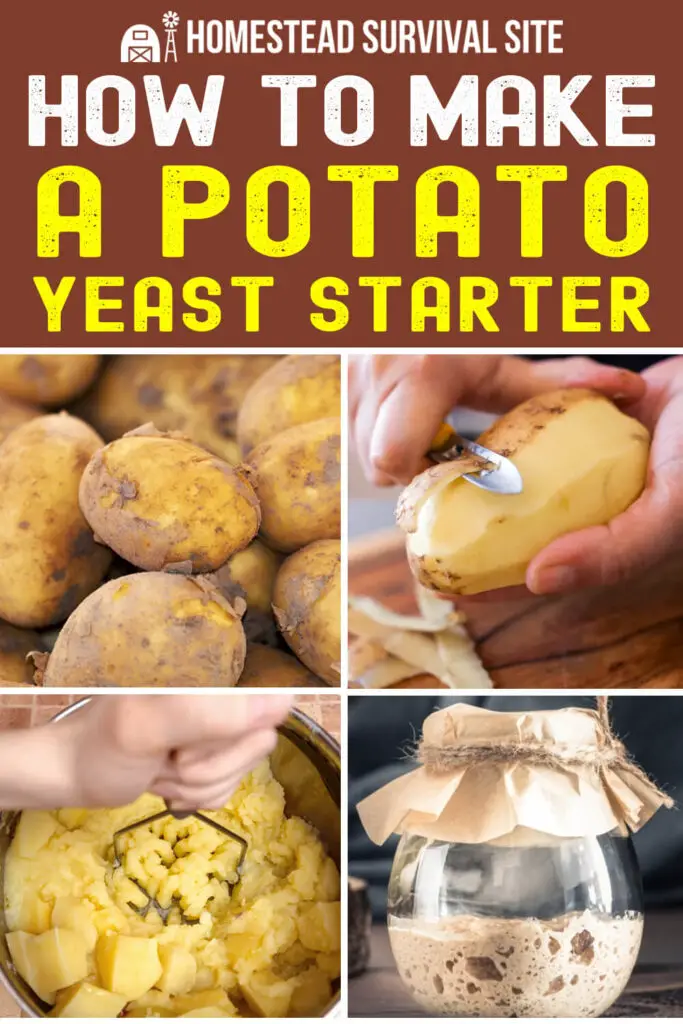Estimated reading time: 6 minutes
Yeast has a fantastic ability to transform dough into fluffy bread. This tiny, single-celled organism is a living thing that takes sugar and starch and transforms it into carbon dioxide and alcohol.
We’re used to picking up little packets or even jars of baker’s yeast at the grocery store. But this key ingredient can get expensive and sometimes hard to find. But you can replace your baker’s yeast with wild yeast. All you need is a couple of ingredients and some time.
What Is Wild Yeast?
While baker’s yeast is grown in a factory with molasses, wild yeast can be cultured from the yeast that is in the air. This process happens in nature when a piece of fruit ferments on the tree. The wild yeast grew on the fruit and caused the sugars in the fruit to ferment.
You can create a similar process at home with fruit, edible unripe pinecones, and even potatoes. Potato yeast is a good choice because it is inexpensive, widely available, and grows relatively quickly.
Want to save this post for later? Click Here to Pin It On Pinterest!

How to Grow Potato Yeast
To grow potato yeast, you’ll peel and boil a potato. Mash the potato, then put it in a quart jar with the cooled water you boiled the potato in. Then, you wait for the process to begin. You can tell it’s working because the potato water will get bubbles in it – just like you would see if you were cultivating a sourdough starter.
You can use the water to bake bread or continue feeding your potato yeast starter. Some people will add flour or sugar to help feed the yeast, but this version uses only potatoes.
How to Use Potato Yeast
To use your potato yeast culture, you just replace the water in your recipe with the water from your yeast culture. It will work just like baker’s yeast, except that it will take longer to rise.
If you use potato yeast instead of baker's yeast, you can expect it to take two to three times as long for your bread to rise. Keeping the dough warm as it rises can help speed up the process, but wild yeast works on its own timeline.
Tools
- Saucepan
- Potato peeler
- Potato masher
- Quart jar
Ingredients
- Water
- Potato
Directions
- Wash and peel your potato.

- Place your potato in a pot and cover it with water. Boil the potato until it's soft enough to mash – roughly half an hour.
- Set the potato water to the side and let it cool – you’ll need it later.

- Mash the potato, then put it in the bottom of a quart jar.

- Cover the potato with the cooled potato water. You need all of the mashed potato to be covered in water. If you don’t have enough, you can add cooled, non-chlorinated water to the jar until all of the potato is covered.

- Loosely cover the jar with a towel and let it sit in a warm place, out of direct sunlight. I like to keep mine next to the refrigerator because it's slightly warmer than room temperature there, but not in the path of the sun. Keep the lid off so that the wild yeast from the air can settle on the potato. If you keep the lid on, it won’t work.

- Let your jar sit for 24 to 36 hours – until the jar begins to bubble. This is how you know your starter culture is working. Put the lid on it, shake it up, and then take the lid off and replace the towel.
- Wait another 24 to 36 hours. Your culture should be good and bubbly by this time, which means it is ready to use. Cook with it by using the water off the top.

- Once you use some of the culture, you’ll need to feed it. You can feed it the same way you started it—by boiling a potato, adding it to the started culture, and pouring the cooled potato water on top. Alternatively, you can add one or two tablespoons of sugar to the jar, then replace the water you used with non-chlorinated tap water.
- If you aren’t using your culture immediately, put the lid on, and store it in the refrigerator so it doesn’t spoil. It will last for several weeks when stored in the fridge. Before baking with it, you’ll want to set it out and allow it to return to room temperature.

Your potato yeast should have a pleasant, slightly sweet, and slightly yeasty smell. If it has a foul odor, then something went wrong. Just throw it away, wash your equipment, and try again.
Always make sure to use a peeled potato because the peels can add an off odor or flavor to your yeast. And remember, if you don’t keep your culture in the fridge, it can mold and go bad. Happy baking!
Like this post? Don't Forget to Pin It On Pinterest!
You May Also Like:












